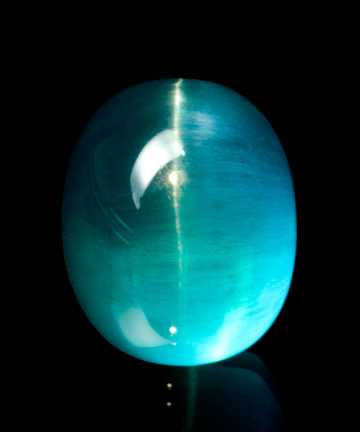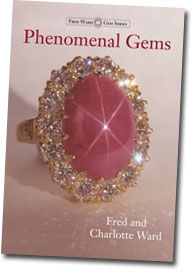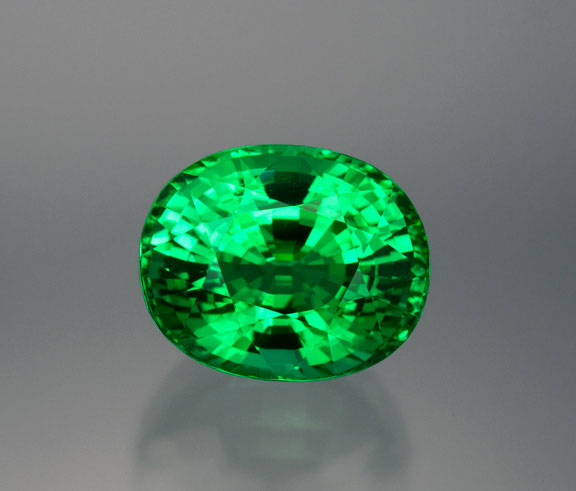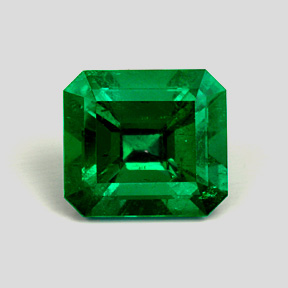
Why “Private Eyes”?
My... how time flies!
May 16, 2008, marked my working with Pala International for an incredible 20 years. Believe me when I say, It has been a “Golden Ticket” ride.
During this time, I have gained immeasurable experience in the fine points of selecting, purchasing, and selling gemstones in the prestigious echelons of “private collectors.”
With a dedicated focus on origins and rarities, Bill Larson (president and owner of Pala International) became my mentor and advisor. His highly developed sense of mineral quality has guided me to continually sharpen my own eyes as to what makes a particular stone rare.
It’s always an enjoyable challenge to distinguish the aspects of a stone that will qualify it as the possible addition to a private collection. Not only do I have to know the rarity of the stone in my hand, but it also has to be compared with what is already found in existing collections—both privately owned and those of museums.
The ability to detect the slightest differences in nuance, due to origin, is vital. It is also the reason why so many connoisseurs who wish to build world-class collections turn to Pala. These collectors have expressed a desire for the very finest. Our aim is to introduce the future collector to this higher level of acquisition by educating them as to the scarcity of the gemstone or mineral specimen they are considering.
Now, with their blessing, our readers get a chance to take an occasional peek into some of the caches that I have been so privileged to help build.
With the aid of friend and Pala International photographer Wimon Manorotkul, we present “Private Eyes.” In this section you will have entrée to stones that most people never get to see. I accompany each gemstone with an explanation as to why it was singled out for a collection, and what separates it from other stones of its variety.
Understandably, names and locations for each of these treasures will remain unavailable.

Rite of Spring
Gem: 8+ carat Emerald
Ah, the month of May….
The time of year when amazing tones of green manifest themselves in all parts of nature with a true sense of renewal.
It’s for this reason that the stone you’ll see in this installment of “Private Eyes” can be nothing else but Emerald.
When I was asked by a very close friend to acquire a 7+ carat, fine, Colombian emerald for him, I knew that this would be a fun and somewhat easy task. Then he added that the stone would have to cert out to be completely unenhanced. “Now that’s more like it!” I thought.
But before I tell you about the end result of this challenge, here’s a short refresher on the mines of Colombia.
The Colombian emerald mines
At the time of this printing (May 19, 2009) there are currently four major commercial producers of all-emerald material in Colombia. While Bogotá is the central business center where miners, cutters, and distributors all come together, presently the Muzo Mine and La Pita mining area (made up of five separate mines) are the Colombian emerald powerhouses of the day. These areas produce incredible stones in sizes suited for royalty.
The Cosquez Mine, near the others, also produces commercially, but nowhere near the amount of its more aggressive Latin brothers mentioned above. Lastly, the old classic: the Chivor Mine, while still sporadically producing good-quality cutting material, now yields mostly very fine crystal specimens to mineral collectors all over the world.
In a year’s production, only about 40% of all emerald material recovered from these four regions can be considered “cutting” quality (not including bead, carving, or material that will undergo alternative enhancements such as resin filling).
Of that 40%, only 15% will be considered “gem” quality. These stones will be enhanced only by oil to conceal imperfections otherwise noticeable to the naked eye.
An even smaller 2–3% can be considered “collection quality” and may still be enhanced with very minimal oil. This material is still beautifully crystalline with great color.
Finally, the “highly rare” category is reserved for those stones that require no type of enhancement whatsoever and a “no indication of enhancement” clause must be substantiated and stated on a lab certification. This type of gem is understandably the most difficult to come by and can take a very long time to procure.
Highly rare
The stone in this edition of “Private Eyes” falls into the “highly rare” category with its incredible life, crystalline appearance, and rich regal color.
Amazingly rare, this 8+ carat La Pita beauty is unmistakably special. After an approximate year of seeking, finding, and rejecting so many others, this natural, un-oiled and completely unenhanced emerald makes the cut—and is precisely what my incredibly patient friend and connoisseur was looking for. He was most pleased.
More on emerald
To find out much more about Colombia and emerald, pick up the fantastic book, Emerald, a Passionate Guide, written by Ron Ringsrud and published just this month. He is a very good friend and a true expert. A beautiful book and a great read!
Until next time… [back to top]
Gem: 56.50-carat Cat’s Eye
When discussing a client’s possible purchase of a phenomenal stone, it is important for them to understand how, unlike with diamonds, the inclusions in the stone are what actually make it so special. They should know why all light-reactive stones exhibiting the same phenomenon often won't look alike. This, for instance, accounts for the fact that a cat’s eye chrysoberyl can appear completely different than a cat’s eye tourmaline. The placement and type of inclusions in the stone will dictate how sharply defined the effect will be. The more tightly parallel the inclusions, the sharper the eye.
By definition, a phenomenal stone is any gemstone that changes its appearance when the stone’s inherent characteristics interact with the physics of light.
 |
| Photo: Wimon Manorotkul |
When viewed under various types of light sources, phenomenal stones will display any number of effects such as color change in alexandrite, asterism in (among others) corundum, or the wink of a chrysoberyl.
In order to reveal its true effect, the one constant almost all phenomenal stones require is the interaction of light with the stone’s own unique internal community of inclusions.
Billowy blue
 |
When I first saw this stone, I had to stop. The color was like no paraiba I had seen—with its billowy tone simply floating in and out of this otherwise crystalline cabochon. After a great chat with the seller, he revealed to me that the amazing cat’s eye was not a paraiba; in fact, it was actually not a tourmaline at all.
My thought was that the color of this stone alone would make it an amazing addition to any collection, but the size and velvety translucency make for a very rare find, fit for a connoisseur. As the seller removed it from its case, the stone danced. The eye is striking white, razor sharp, and travels from one end of the stone to the other without breaking. I was mesmerized.
“I know someone who will want this,” I said.
Reader, have you guessed what it is by now?
This gorgeous gemstone is a 56.50-carat apatite from Brazil, and is now in the hands of a very happy collector who has an insatiable appreciation for the phenomenal.
Typical sizes of gem grade apatite will range from 1–20 carats. Often mistaken for tourmaline, this stone’s incredible color is due to the presence of manganese. With a hardness of 5, extra care should be given, especially when setting. Main sources for apatite are Brazil, Burma, and Madagascar.
If you wish to learn more about various stones and their phenomena, pick up the Phenomenal Gems booklet by Fred and Charlotte Ward; from the Fred Ward Gem Series.
Until next time… [back to top]
Gem: 15.77-carat Intense Electric Green
Here is a great stone with which to kick off our “Private Eyes” feature.
When I was first shown this stone, I wasn’t quite sure what it was. If the stone was indeed what they were telling me, I definitely wanted to get it into one of my collectors’ hands. But I needed to know more about it first. The color was like nothing I’ve seen before—definitely something a collector couldn’t obtain easily.
 |
| Photo: Wimon Manorotkul |
Cradling the gem in my hands, the stone mesmerized me.
The color wasn’t anything like the traditional teal, Caribbean-water color that one thinks of when the word “Paraíba” is mentioned.
After a moment of louping the stone, I asked if it was African and the gentleman replied, “Yes.”
I knew that mining for intensely colored tourmaline had only been going on since early 2001 and there was still much uncertainty about it. All that was known at the time was that much of the copper-bearing material being brought out into the market was coming from the southeasternmost country of Africa, Mozambique.
There was much talk in the industry of this “new” material being called paraiba—but it was not from Brazil, and the chemical composition, although not yet fully studied, produced amazingly intense hues of teals and greens.
What I did know is that the stone was over 15 carats, perfectly cut, and had an electric green color that went beyond neon in description. So if this stone was indeed unheated, its color defied most natural stones out there, and would definitely fall into the collection-quality range.
Needless to say, the stone was tested, and to our great pleasure it was indeed copper-bearing and unheated. This gem is such a rare color that it and others have just been featured in the latest issue of Gems & Gemology.
Oh—as a final note… The client came to view the stone in my office, loved it, and bought it for his son to begin a collection of his own. Nice… [back to top]
